Museums in Sicily will not reopen on May 18, as stipulated by the Dpcm of the so-called “Phase 2.” The directors do not yet have any provisions on the matter. Although it is on the island, sooner than in the rest of Italy, that the talk with visitors could be rekindled. In a Sicily that an upside-down ranking saw placed last among Italian regions in terms of contagion index. Although autonomy would allow the region to act independently of the state. Not that the last test was exhilarating: just last March 1, the incautious decision was made in “autonomy” to maintain free admission to cultural sites, favoring the gathering of more than twenty thousand visitors in the midst of an emergency. It must be said that even in the rest of the country the decision to reopen on the 18th is all "to be confirmed." This was said a few days ago by Minister Dario Franceschini, specifying that, however, will gradually reopen only those institutions that will be able to guarantee security measures. And if in the state a circular of the Ministry of Cultural Heritage should establish those for the staff, while for visitors will be the directors of each museum, according to their own peculiarities, to draw them up, in Sicily, while the museums are waiting for indications from the Department of Cultural Heritage and Sicilian Identity, only the three historic autonomous archaeological parks , Valle dei Templi, Naxos and Selinunte, say they are ready to start as early as May 18. Along with that of Syracuse, established last year. For the other seventeen wanted always by the Musumeci government, not yet endowed with financial autonomy, we do not know, however, the date of reopening. Yet these are thousands of square meters of nature and history for walks that allow distances that are not close, with a flow of visitors that was not important even before the health emergency.
There is, in fact, the economic issue. Germany, which reopens its museums from May 4, has invested 10 million euros to adapt them to the new measures to contain the contagion. Which is not much if we think that the Lazio Region alone has allocated more than 8 million euros for museums, libraries and places of culture, also in view of the May 18 reopening. In Sicily, in the Stability Law just approved, the same amount as in Germany has been earmarked for foundations, theater companies and concert associations, and a 75 million euro fund managed by the Tourism Department has been given the go-ahead. No funds, however, for anti-Covid security for museums.
And then, besides that of staff and visitors, there is also the issue of security for collections that remain closed, raised by Icom and Interpol. For those that reopen, however, the problem has been raised by Orazio Micali, director of the MuMe. At the Regional Museum of Messina, moreover, unlike the race for web visibility undertaken by other museums, during the closure they preferred, instead, to bring the curtain down, rather than improvise digital content professionals: the Sicilian institutes cannot, in fact, count on an existing network of communication officers like the Mibact.
To find out, therefore, about the initiatives and measures taken by the island’s museums and archaeological parks during the lockdown and those they intend to take in light of the reopening, together with Micali (to whom we carved out more space to illustrate the programmatic document for “Phase 2” that he had already drafted on April 16) we heard from Luigi Biondo, director of Riso, the Regional Museum of Modern and Contemporary Art in Palermo, forerunner of Franceschini’s autonomous museums, to which the founding law (no. 9/2002, headlined “Norms on labor, culture and education”) assigns “scientific, organizational, administrative and financial autonomy” (art. 18), which “also includes the management of the revenues flowing to the institution’s budget, with the exception of personnel expenses” (art. 18, c. 3). A paragraph repealed in 2006 and reinstated in 2009, although to date the museum does not enjoy financial autonomy at all, so much so that like the others it remains closed pending higher decisions. For smaller museums, where it should be easier to organize staff shifts and quota the not-so-many visitors, we interviewed Andrea Patanè, director of the Regional Museum of Ceramics in Caltagirone. Gabriella Tigano, director of the Naxos Archaeological Park, explained to us, on the other hand, why hers is one of the few institutes able to reopen as early as May 18. Four “synoptic” interviews from which it emerges that the legal status of the different institutes also affects the restart.
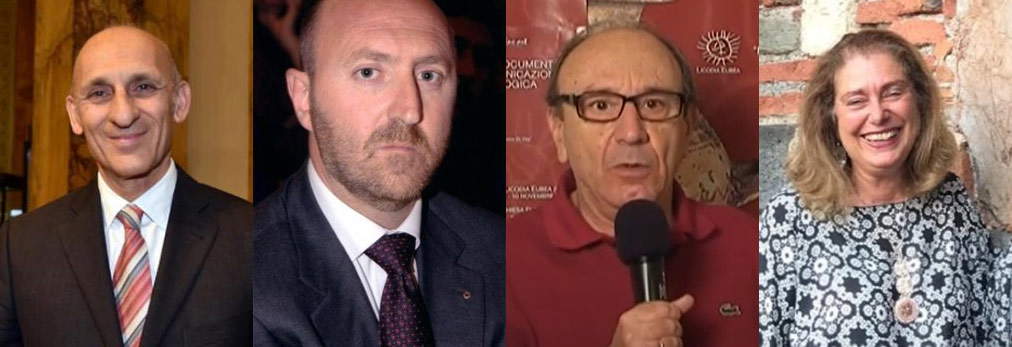 |
| From left to right: Orazio Micali, Luigi Biondo, Andrea Patanè, Gabriella Tigano |
During these two months of closure, what initiatives have you taken to stay “connected” with your audience, perhaps trying to broaden retention to new visitors to entice them to come and meet you live when you reopen? A NEMO (Network of European Museum Organizations) survey found that the most popular social media used by museums are Facebook and Instagram. Have you also used these platforms? To convey what content? Will the push for digitization continue after reopening? How?
Blond. As a result of the State Directives for the containment of Covid-19 risk, our sites of Palazzetto Agnello, Palazzo Belmonte Riso and Albergo delle Povere in Palermo and Palazzo D’Aumale in Terrasini have been closed. Much of the staff was placed on agile work mode(smart working), but from the first moment we tried to stay connected with each other and with our audiences, scholars and educational institutions. We poured small video contributions on our Facebook and Instagram profiles telling about some of our most appreciated artworks with an overview of the authors, with the aim of offering a privileged virtual tour. We continued our internships and distance learning placements with students from the Academy and the Department of Art History in Palermo. Thanks to some high school teachers, we are building a path of adoption of the monument and its collection that can raise awareness of our facility more and more. We joined the Mibact’s national campaign #dilloinquindicisecondi with a spot that was published on the Ministry’s Instagram and FB profiles. The material produced and that we will certainly develop can serve in the future to spread awareness of our sites and the works we host.
Micali. We were working on the “creation” of a new audience, given the low number of attendance in previous years, especially visitors belonging to the Messina area and its vicinity. We had written this in the program document published in October 2019. In order to be present on Facebook or Instagram with projects and proposals of a high level, it is necessary to be able to spend, the minimum necessary, to be able to compensate for the indispensable professionalism. But in Sicily, museums do not have their own spending chapters and are not allowed to purchase anything without prior authorization. More than digitization, computerization, not in terms of virtuality but in terms of interactivity, support and diversification of knowledge, always favoring the direct relationship. A museum cannot do without emotional contact.
Patanè. We have posted on Facebook, on the institutional page of the Archaeological and Landscape Park of Catania and the Valley of Aci, to which our museum is hinged, news about the museum structure (Museum Headquarters and the new location of the former Convent of St. Augustine ) and photos of the exhibits with an invitation to visitors to visit us as soon as the emergency is over. Yes, we have been using Facebook for all information related to organized cultural events. After the reopening we will continue to inform potential visitors by posting content and events on social platforms.
Tigano. Naxos Taormina Park has been present on Facebook, Instagram and Youtube platforms for years. Since the early days of #CuraItalia, our social media manager has reshaped the editorial plan according to a precise strategy that was not limited to interventions on the history of the sites and exhibits: in fact, interpreting the widespread “sentiment” of followers, that is, nostalgia for art sites, on the evening of Saturday, March 14 (first in Italy) we created and launched the hashtag #CoraggioItalia with the switching on of the Tricolor lights in the Ancient Theater of Taormina. The post went viral and the news bounced on national TV and newspapers giving great prominence to the positive message from Sicily. At the same time, the monthly average of users on FB grew. Regarding digitization among the projects in the pipeline is a multimedia catalog for virtual visits to all sites
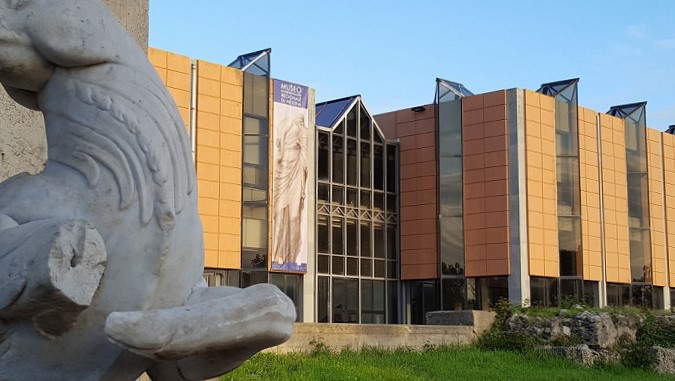 |
| The MuMe of Messina |
What kind of losses have you suffered? How much do they amount to in economic terms? And have you had to suspend collaborations with freelancers?
Biondo. The losses are difficult to quantify since the Museum and its related sites do not have economic autonomy, but we can calculate the damage in terms of image and lost income. There were already plans for interesting events to be hosted at the Albergo delle Povere that would have brought in some
fees to be converted into work and supplies for the site. The Bodyworlds exhibition could not complete its cycle and lost over 10,000 tickets already booked. Five percent of those tickets would have been paid into the regional coffers. We had begun the procedure to contract Palazzo Riso Additional Services, this would have brought other direct and indirect income with events to be defined in their collaboration. The direct thread with professionals, although with great difficulty, has not been severed and continues to bear fruit. We will soon begin essays at the Albergo delle Povere to verify the possibility of relocating, in some rooms on the second floor, the Emeroteca of the Regional Library. Then we received the project for the consolidation of the ceiling attachments of the famous installation with Joannis Kounellis’ cabinets. Contacts with artists and curators have been almost daily and I am sure they will produce results very soon.
Micali. In the second half of last year we recorded a -3 percent that partially offset the -15 percent in the first half. The promotional work at the end of the year had begun to pay off. In January +90%; in February +30% attendance over the previous year. Encouraging expectations, not least because of the agreement with the Port System Authority and the Municipality of Messina that boded well for new flows from cruise tourism. Freelancers, tour guides in the lead, would find more space and opportunities for their own businesses, but also agencies and related services. Not to mention bookings for events and conferences already being granted.
Patanè. Last year, in the months of March and April, we had a little more than 2,000 visitors; at the moment it is not yet possible to quantify the economic losses due to the lack of ticketing, since we cannot process the data of the free tickets taken out last year during this period; considering that, on average, one third of the tickets taken out in a month are free we can, in principle, quantify a loss of takings of about € 5,500. All collaborations are currently on standby.
Tigano. It is still early to quantify. Certainly the damage will be enormous and it will be impossible to repeat the resounding season of 2019, when the Park recorded its first historic record by breaking through the one million visitor ceiling: there were 1,033,656 at the three sites of Taormina, Naxos and Isola Bella while in 2018 the total was 993,668. The Park, an autonomous entity, lives on ticketing, and since April generally the income grows exponentially corroborated by the attendance of foreigners, which for us is 70 percent of the turnover. I don’t think local users can make up for the lack of international tourism, although in the “low season” we had recorded considerable growth: in January and February Taormina was +68% and +58%, Naxos +35% and +70%. Then came the epidemic....
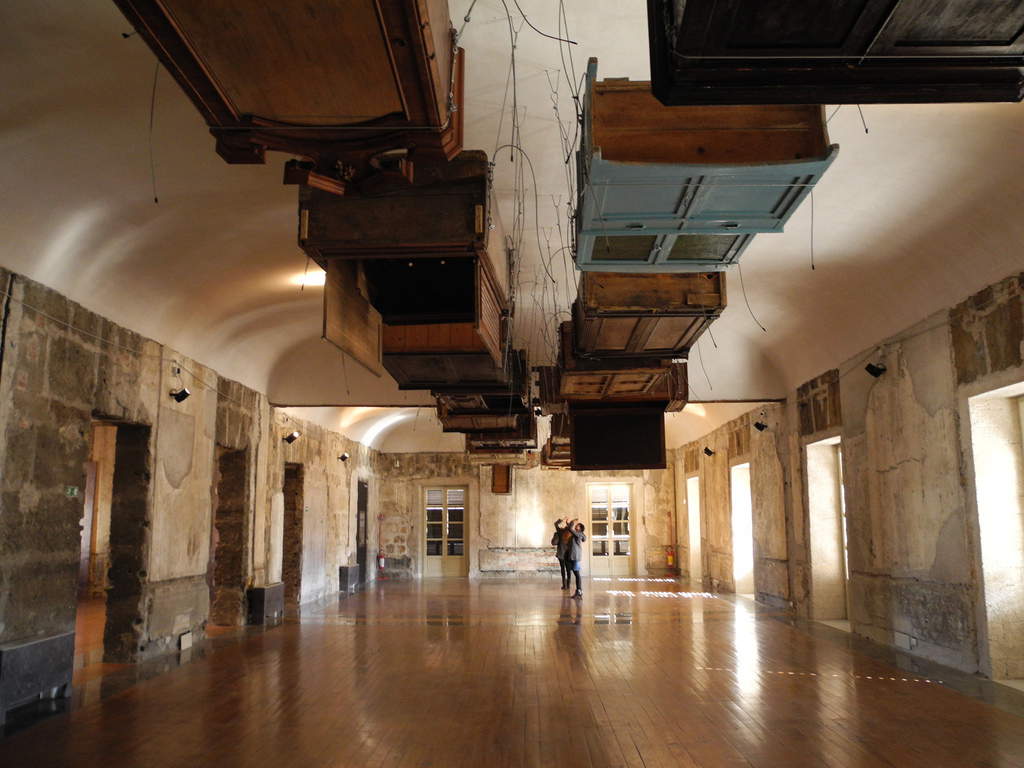 |
| The Rice - Regional Museum of Modern and Contemporary Art in Palermo. |
Did you have any exhibitions going on when it closed on March 9 or did you have any in the pipeline that were supposed to open in the past few weeks? When do you plan to open them, with closing deadlines evidently slipping?
Blond. We had in progress the Body worlds exhibition, which I mentioned earlier, and forwarded a rich program to be developed in the coming months. It will certainly be necessary to postpone everything. I can’t think of exact dates until we have received the right indications for proper security measures.
Micali. The exhibition Riding through the Centuries, which is almost at an end, and a program of screenings were under way. The lack of response to the program of events and activities sent to the department in January had not yet allowed us to decide which initiatives to pursue and the dates they would be open to the public. Meanwhile, we had set our sights on a summer schedule of events and performances. Of that program it is not easy to say what can be saved and what can be implemented and with what limitations. It is not up to us alone. We have postponed any evaluation until after May 18.
Patanè. We were organizing an exhibition with the Museum of Montelupo, Tuscany, with the loan of about thirty ceramic artifacts from the museum; the exhibition would then be transferred to Caltagirone. We plan to open in the fall.
Tigano. We were already working, from a scientific point of view, on the new permanent display of the Antiquarium of Francavilla di Sicilia, inside Palazzo Cagnone. Thanks to smart working and a shared platform that can be accessed remotely over the past two months, the various professionals have been able to continue the planning to integrate the traditional exhibit with digital tools: an introductory video and the immersive room. We hope to open at the end of June. We were also planning for May a small experimental review of classical theater with the high schools in the archaeological area of Giardini Naxos, where we will soon mount the 200-seat outdoor grandstand anyway. As soon as possible we will start with evening visits to the Ancient Theater.
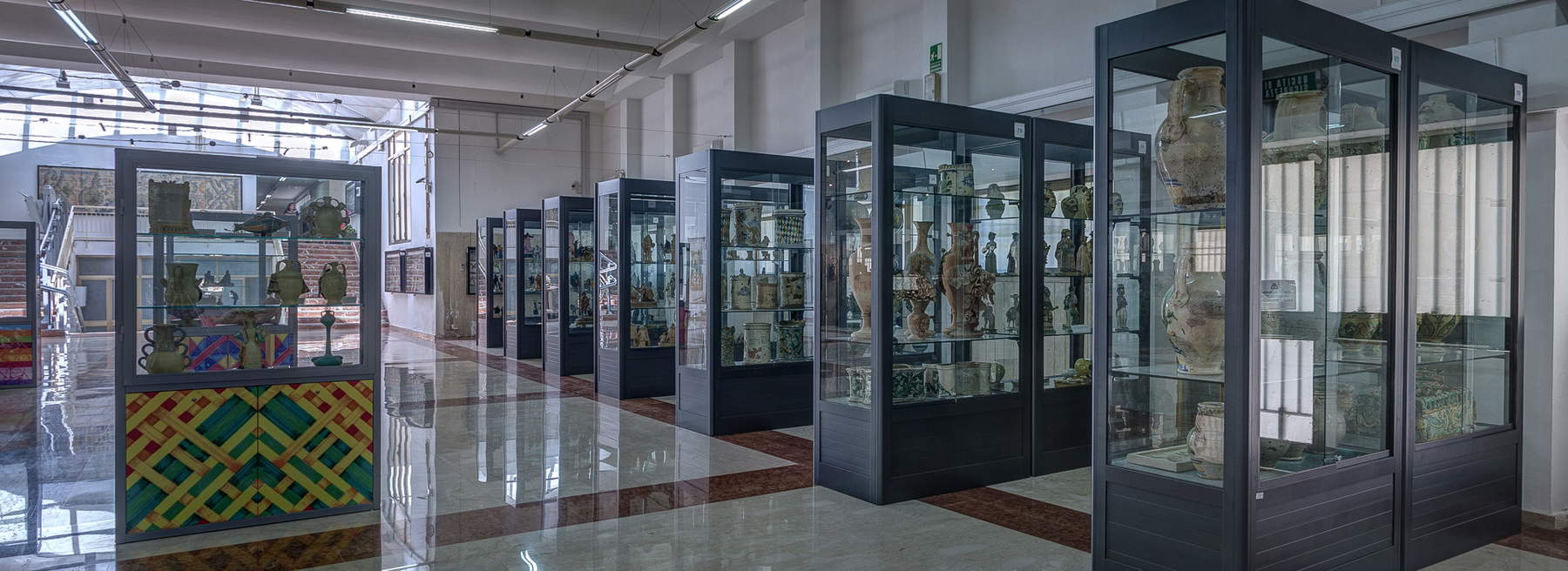 |
| The Museum of Ceramics in Caltagirone. |
State museums will reopen after May 18. Cimam, the International Committee of Museums of Modern and Contemporary Art, the main international organization representing these types of museums, suggests following the “Asian model” for reopening: in China, Japan and South Korea, museums have been reopening since mid-March. Just a few days ago, in La Sicilia, I suggested adopting that model in Sicily as well (in brief: online reservations with limited numbers and linked to the name, body temperature detection, safety distance and mandatory masks, disinfection of the premises, increased supervisory staff) adapting it to the specificities of the territory and the regional administrative organization. The impression is that there is no single direction, no timetable, and that everyone is doing their own thing. They will reopen, each with their own measures, the “historical” archaeological parks with the help of the companies that manage services to the public, but it is clear that financial and managerial autonomy is what makes the difference, while for the museums, as for all the other new parks established by this government, for the moment the only thing certain is that we do not know when they will reopen. Has the BBCCIS Department given you guidance for the different areas of action, which Cimam identifies as visitor safety, staff safety, facilities management and public communication?
Biondo. We have not yet received operational guidance for the reopening. I don’t think it will be difficult to organize the flow of our visitors, since we have never received mass tourism and we have exhibition venues with considerable space. It will be enough to stagger attendance in the halls, make use of reservations and differentiate visiting hours. I am very confident given the commitment and cooperation of our supervisory staff, who have always shown professionalism and love for their work and the places they guard.
Micali. We are waiting to read the guidelines, which I think are being written in the offices of the Department and the Department of Cultural Heritage, in consultation with the Civil Service equivalents. It is clear that any forecast will not be able to ignore appropriate spending actions. Actions, not forecasts. The distinction between archaeological parks with financial autonomy and the remaining peripheral structures of the Department of Cultural Heritage marks the difference between those who can plan, decide and spend and those who can just plan. The reorganization of the Regional Departments written in the Decree of the President of the Region No. 12 of 2009 and then the entry into the scene of Legislative Decree No. 118 of 2011 deprived the Museums, but not only them, of any possibility of direct spending, subordinating any purchase, even the simplest, to a very long rigmarole of prior authorizations that, every year, must wait for the approval of the regional budget. But to restore the functionality of the offices, it is necessary to immediately equip them with filters and protections on par with any business or enterprise. In order to reopen museums to visitors, it is mandatory to have systems and tools that subordinate access to adequate levels of control and guarantee the user as peaceful and safe a visit as possible, for their own health but also for that of the staff working inside the halls. We need rules that are as uniform as possible throughout the region, enforcement methods and shared tools. But we also need resources available to the need from the directors, otherwise how will they be able to decide to sanitize and clean the rooms on a day-to-day basis; buy the PPE needed by users and staff; replace and clean air conditioning filters on a continuous basis; adjust risk assessment documents; integrate the figures responsible for occupational health safety; collect and remove different waste, and so much more?
On April 16, I sent to councillors and general directors of the cultural heritage and civil service, and also to the trade unions, a document in which I indicated, from my point of view, the actions to be reasoned about adequately in advance in view of the so-called phase 2. A document of a few pages focused on aspects concerning the articulation and operation of a museum but which in its general aspects could have been used for other types of offices. The document examines factors related to health and safety in the workplace; to the articulation of staff attendance by applying some modalities already present in the Regional Collective Labor Agreement for the non-management sector; to the application of personal protective equipment to methods of prior verification of access to workplaces in an automatic form and without the use of other personnel; to systems for controlling the access of the public and visitors to a museum; to the introduction of systems for controlling the interpersonal distance between visitors and with the staff working in the halls. Systems on which, with my collaborators, we have researched and initiated interlocutions, especially taking into account the Administration’s timeframe, the economy and sustainability of expenditure, and the possibility of achieving the objectives of control and security without resorting to complicated systems that would need equipment that is not ordinarily present in our museums or subordinated to specialized skills and levels that we do not have available. One only has to look at the controversy that has arisen around the Immuni application to realize that low regulatory impact actions are needed. Among these is a bracelet that a cheap and readily available technology used by Belgian dockworkers, but not only by them. It has been mentioned on some news sites these days. The tag, as the device is called, is a tiny transmitter that operates in Bluetooth mode and alerts its owner that he or she is entering the range of another similar system (in the case of dockworkers in the operating range of a crane or other operating machine in order to avoid workplace accidents). When a tag engages the perimeter of another tag both will sound, illuminate and vibrate, alerting their respective owners to the conflict. Simply “calibrating” the tag’s Bluetooth range, up to 1m or more, is enough to add interpersonal distance compliance to safety. The tag is perfectly anonymous and, if not connected to a gateway or wireless network beforehand, does not allow and leave any trace. The proposal is very simple. Equip each worker with his or her own tag so that he or she always knows that he or she is at the right distance from colleagues: in his or her room, in the hallways, when entering or exiting, near beverage vending machines, etc. By associating each entry with a tag inserted in a disposable wrapper, one would be able to encourage respect for interpersonal distance without resorting to complex systems to be administered in languages and ways that differ greatly from visitor to visitor. With similar assumptions, I have proposed a system of preventive access verification with temperature detection and facial recognition associated with the identity of the entrance ticket holder purchasable only online with reservation of visiting hours, in order to ensure security with respect to the facial misrepresentation produced by the compulsory use of a mask. This system or any other is fine as long as there is a concrete solution adopted in time. And there is not much time left before May 18.
Patanè. Not yet. But I don’t think Asian protocols are applicable in Sicily. For the economic and, especially human capital resources of our region, it seems like science fiction to me.
Tigano. While waiting for government guidelines, we are beginning to provide some prerequisites preparatory to the introduction of safety standards, such as periodic sanitization of common areas, to protect the health of workers and visitors. We are working together with Aditus, the company that manages our additional services. Masks, sanitizing gels and instrumentation to measure temperature are being purchased; sanitizations of service areas
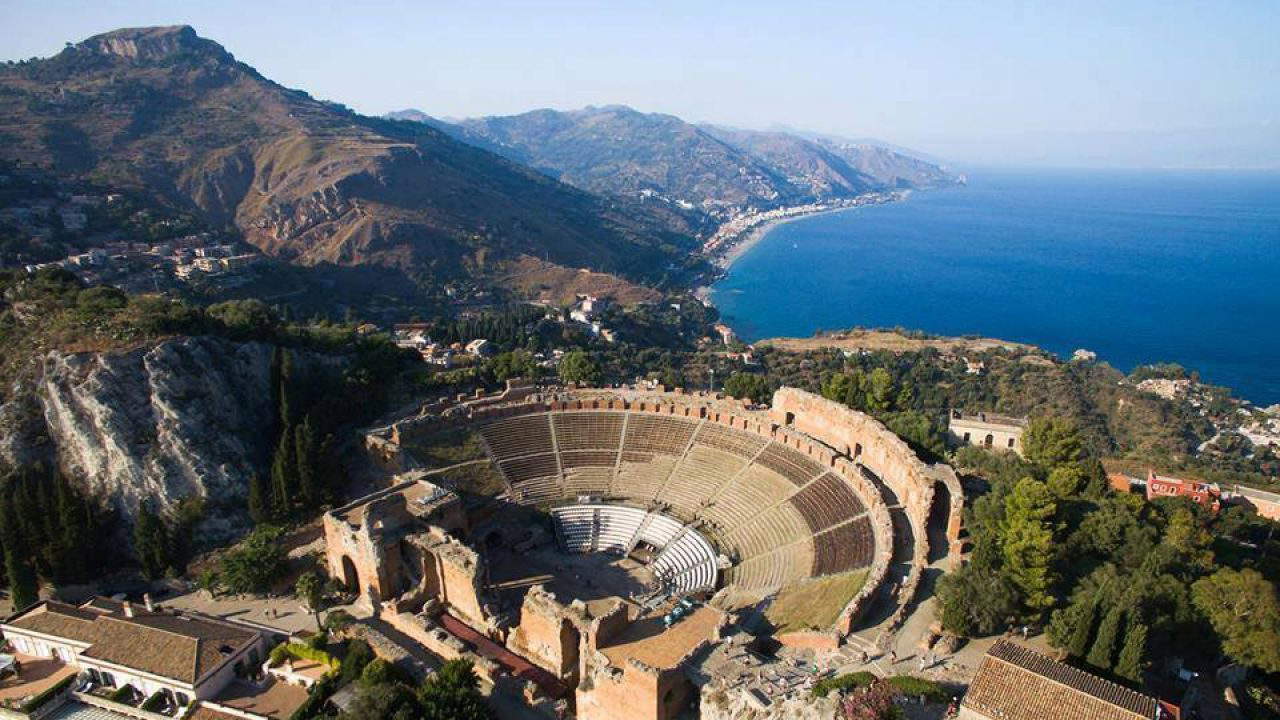 |
| The Naxos Archaeological Park. |
Do you think anything will change in regional cultural heritage management after this experience? Will it change anything for the institute you direct?
Blond. I don’t have any certainties or similar experiences that would comfort my answer, but I am an incurable optimist and therefore I dream that the desire to recover the beautiful with the freedom to enjoy it will drive many people to visit our sites. We will have to be good at rethinking them with new paths and readings that are even more fascinating and engaging. The aphorism that “beauty will save the world” should be, in this sense, a real dogma for us and for the future of Italians.
Micali. Whether it will change anything? Hard to say in absolute terms. That a change is necessary is beyond doubt. Not in terms of peripheral reorganization; we have had four in nine years. Speaking of Museums, the change should concern as much as possible the recovery of the existing gap with other Italian realities, in terms of modernity, interactivity, languages, plurality, access to spending. But above all, technical-administrative stability, planning capacity that automatically translates into regularly assigned multi-year budgets, development models and objectives that dispense with “over-the-counter” funding, certain resources for maintenance and management of the ordinary, adequate levels of autonomy in relations with the national and international scientific and academic world. The Messina Museum is no exception.
Patanè. To the first question I really don’t know what to answer. For our Museum, we will certainly change, as I think for all public places, the methods of access, especially for groups of people (schoolchildren, organized groups, guided tours) that will have to be quotaed, we will use visiting routes that avoid crossroads, we will use one access for visits and a separate exit, we will use, if the Region will provide it, all the hygienic garrisons to protect the health of the staff.
Tigano. It is too early to say although, looking at daily life, we imagine that some processes will be “dematerialized”: starting with tickets, which are increasingly digital and less analog. This is nothing new for us, as we have been using the online booking service since 2018. Among the novelties that unite us with other realities is the installation of turnstiles at the entrance to the sites: a barrier that will allow security spacing. For everything else, considering that the pandemic is an extraordinary emergency, we navigate by sight, ready to correct course and with one great certainty: humanity cannot do without the beauty and memory of the past. We will all return to admire it.
Warning: the translation into English of the original Italian article was created using automatic tools. We undertake to review all articles, but we do not guarantee the total absence of inaccuracies in the translation due to the program. You can find the original by clicking on the ITA button. If you find any mistake,please contact us.